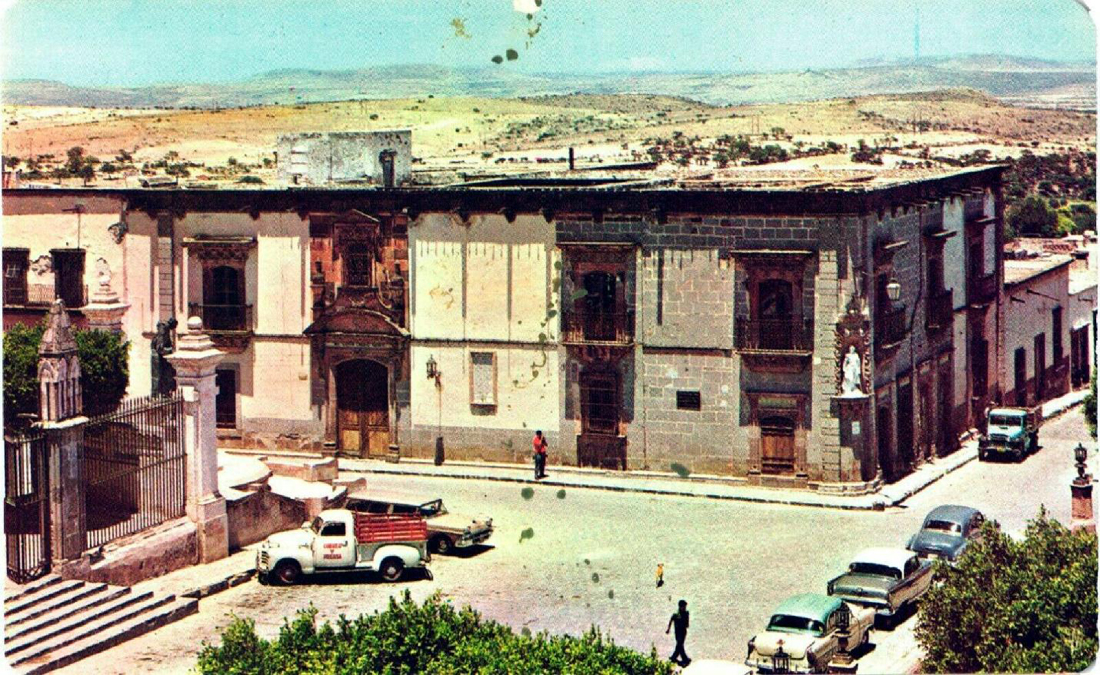
Vintage Postcard of the Jardin in San Miguel circa 1952
*
Mar. 19, 2023
"Every thread you discover in the local web of life leads beyond your place to life elsewhere."
- Scott Russell Sanders, author, essayist
by Marni Hills, text and photos
Alondra Sarahi Vazquez Mendoza, interpreter
A wiry young man, barely out of his teens, hums a tune, happily piloting his bicycle along a rocky dirt road that leads from Celaya to San Miguel. It's near midnight, and the road is quiet and black-out dark. There is no electricity here. There are no streetlights, no cars on the road, no headlight on his bicycle. The year is 1951, and Antonio Mendoza Rodriguez has just come from a little bar along the route from Celaya, where he had been spending some of his paycheck, drinking and hanging out with friends.
"Abuelito!!!!" was the exclamation I heard from Antonio's granddaughter Alondra Mendoza, and his daughter Cruz, as he told this story to us in the fall of 2021. Alondra translated. We were sitting down for an interview at Antonio's home on a quiet street in the San Antonio neighborhood of San Miguel. Shocked laughter and giggling ensued, with the women's hands clasped over their mouths and their eyes wide, lit up with surprise. "You told us all you ever did was work your whole life!" they chided.
The ups and downs of daily life that this hard-working man was describing to us were fascinating, and I think Alondra and Cruz were also intrigued to hear some stories they hadn't heard before.
If you've been inside the Fabrica La Aurora, surely you've noticed the faded old photos hanging in the main hallway, and the giant hulks of industrial equipment scattered throughout the buildings.
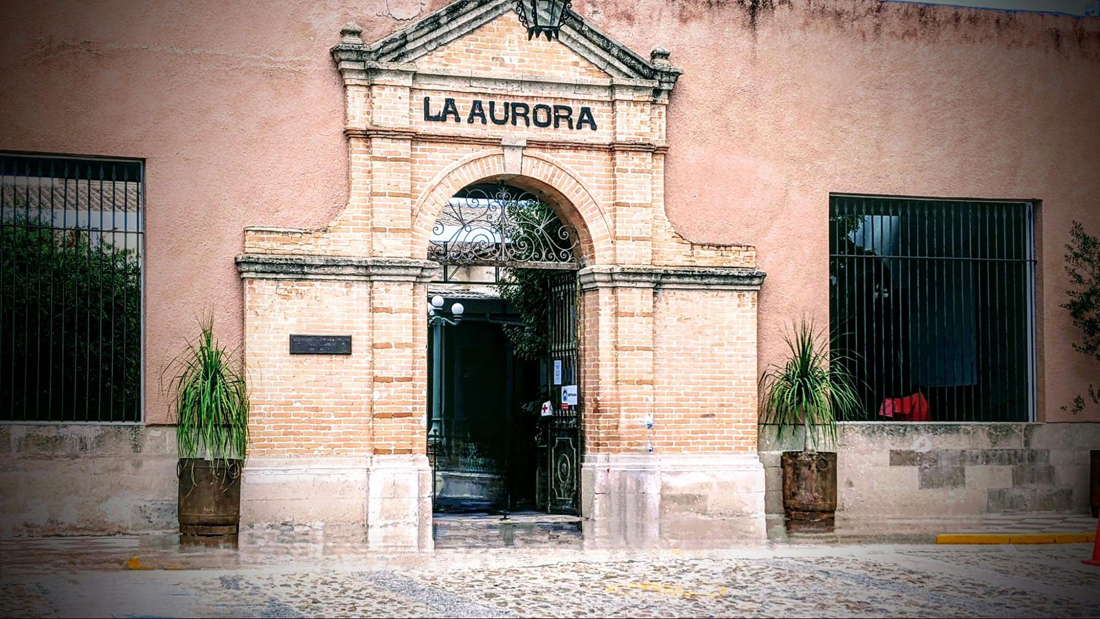
Main Entrance of the Fabrica La Aurora
*
Those remnants of the past fueled my imagination and interest, and when online searches yielded no details about life at the factory from those days gone by, I decided to try to find the stories myself. By a great stroke of luck, I found Alondra working at the Biblioteca, on the first day I began my search. She told me her abuelito Antonio worked there all his life and would love to tell me about it. I felt that capturing this oral history from Antonio's perspective would be wonderful to record and share.
The interview with then-89-year-old Antonio continued. Earlier that year (1951) 19-year-old Antonio had been fortunate enough to get a 'well-paying' job at La Aurora textile factory, which at the time was the only major business in town. He had already been working since age 14, apprenticing at a print shop that made calendars. The pay was very low at the print shop, but Antonio knew an older friend that made 150 pesos a week working at the factory. He asked the man if he could get him a job.
The friend brought him to meet the factory foreman at Aurora. The foreman looked him up and down, shaking his head. The position was for a Tejedor, or knitter, operating giant industrial looms. "He's too young and small for this work," the foreman told Antonio's friend. The friend replied, "He may be young but he's really strong! Give him the work and see if he can do it well. If not, we'll throw him out."
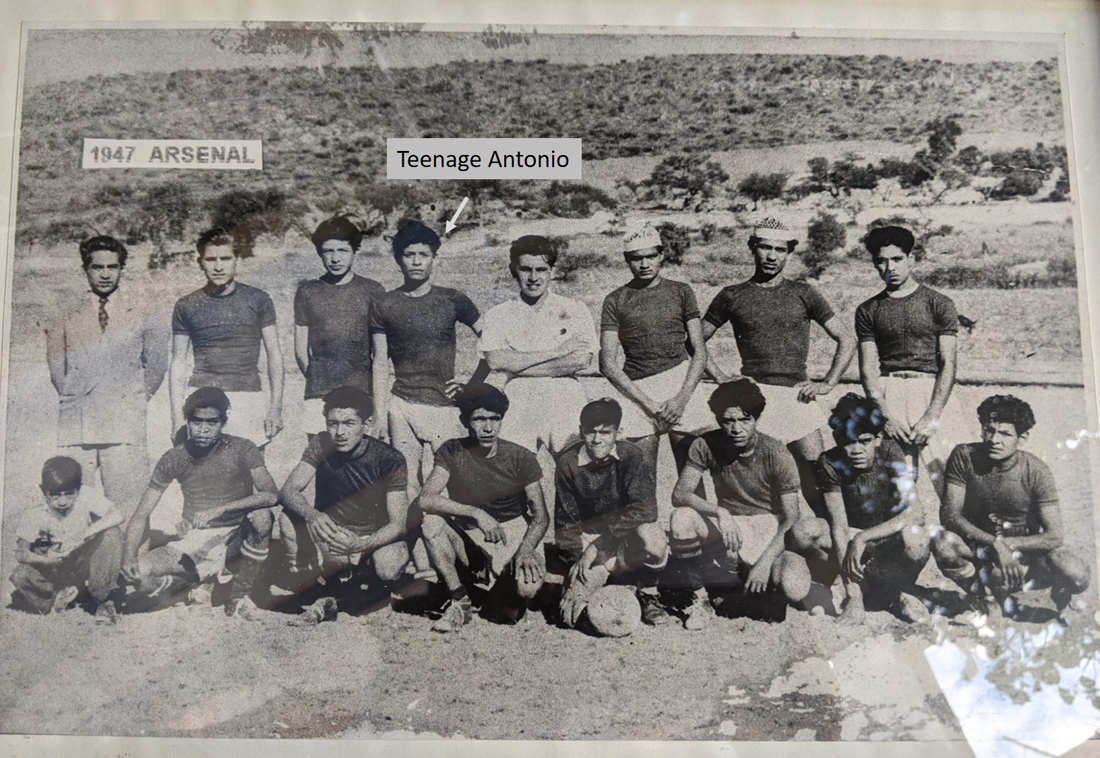
Antonio's Football Team in 1947
*
At this time in the early 50s, San Miguel was experiencing an influx of G.I.'s from the U.S., who brought their monthly $65 stipend with them, looking to stretch their dollars in Mexico. Apartments were $10 a month, a bottle of liquor was 65 cents, and cigarettes were 10 cents a pack. The G.I. Bill allowed veterans to spend their stipends on accredited classes at the Escuela Universitaria de Bellas Artes in town. The school offered painting, ceramics, sculpture, and languages, and the easy, cheap lifestyle in San Miguel was preferable to the scrimping and saving necessary at many pricey U.S. art schools.
I was curious if Antonio had ever met any of those students from the States. Did he ever cross paths with them or hang out with them? He replied that yes, sometimes when he went to La Cucaracha, the famous bar on the Jardin, he would be elbow to elbow with the students, who seemed to love their drinks, he said, but they were "never the types to pick fights, they just loved to drink and talk." This elicited more giggles and shocked exclamations from Alondra and Cruz.
I asked Antonio, what was it like, year after year, working at the factory. Was it difficult? Were there ever any tragic accidents you witnessed or injuries he suffered? Did you socialize with friends you made there?
As I ask my questions in broken googled Spanish, Alondra translates and repeats every question loudly into Antonio's ear, from just inches away. His work around all the loud motors and equipment had severely damaged his hearing during his many years at the factory.
Antonio told us he did get injured once when a large moving part from the loom hit him square in the chest. The looms made large skeins of thread that were used to weave the manta, or muslin, for a variety of final products like towels and sacks for dry goods. He never saw a doctor for the injury, but had an enormous bruise and "probably a cracked rib." "There wasn't much time to socialize," he shrugged.
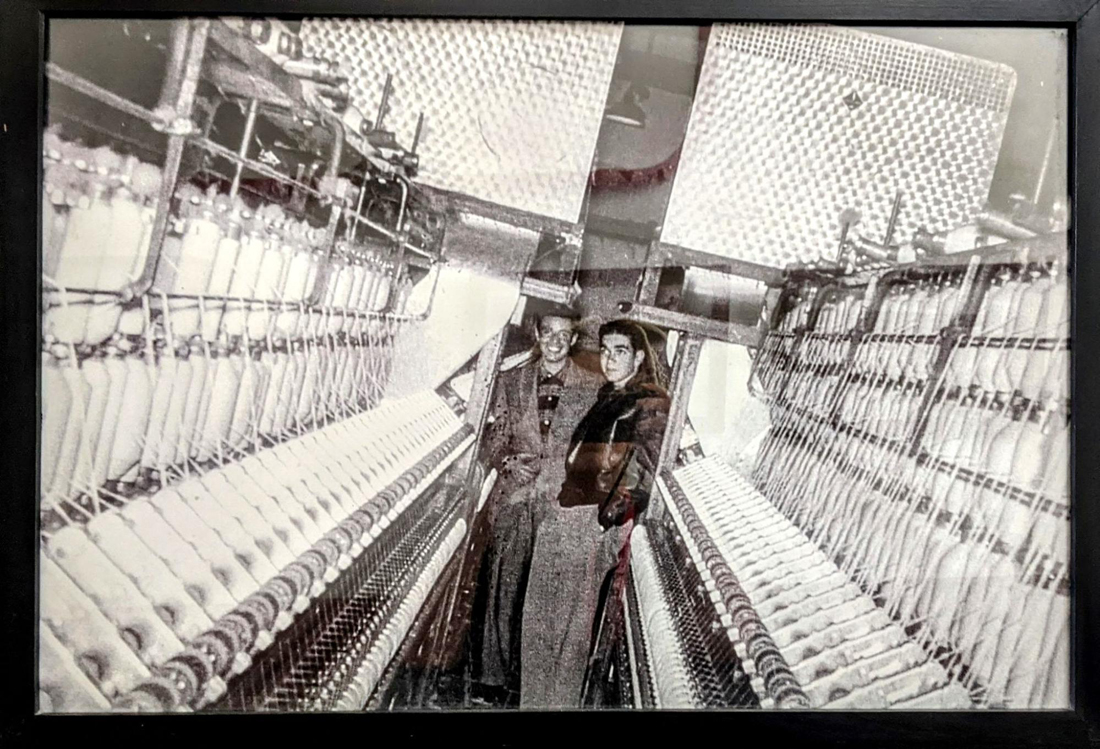
Thread spooling machines at Fabrica La Aurora circa 1956
*
As the years passed, Antonio worked hard at the factory - second shift, six days a week - and often volunteered for overtime and doubles, working 14 hours or more through the night. The extra work was a necessity, as he was now married and had a growing family. He and his wife, Damiana Brena Gonzalez, were married in 1957 when he was 25 and she was 17.
By the 1970s, Antonio and Damiana had 12 children. "People had more kids back then," Antonio explained. The Mendoza Brena kids included Maria Elena, Irene, Maria Isabel, Marujenia, Antonio Jr., David, Pedro, Gabriel, Juan Miguel, Belem, and Cruz, the youngest. With a melancholy downward glance, Antonio said quietly, "One baby died." That was 3-month-old baby Racquel, who was taken from them by muerte de cuna (crib death).
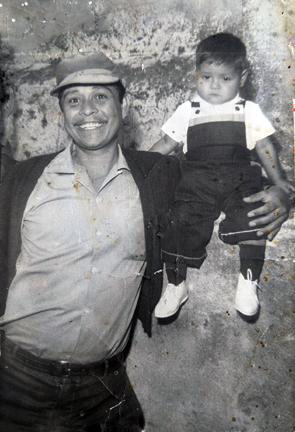
Antonio and his 2-year-old son Juan Miguel in 1975
*
Fortunately, in 1975, the family was able to move from a rented house and purchase the comfortable home we are now sitting in. At that time, buying a house was more like "buying land with a dilapidated old structure on it, and it needed to be rebuilt" Antonio told us. He paid $1000 pesos for the land and building. There were no cobblestone streets, just dirt roads and trees, with very few houses. The only city buildings at that time were in a small ring about 2 blocks around the Jardin. They didn't have electricity at the house. Antonio would walk home from work in the dark, enter the house in the dark around midnight, and fall exhausted into bed in the dark. I asked him what he did for fun? "There wasn't much free time." Antonio had to keep working constantly to provide for his family.
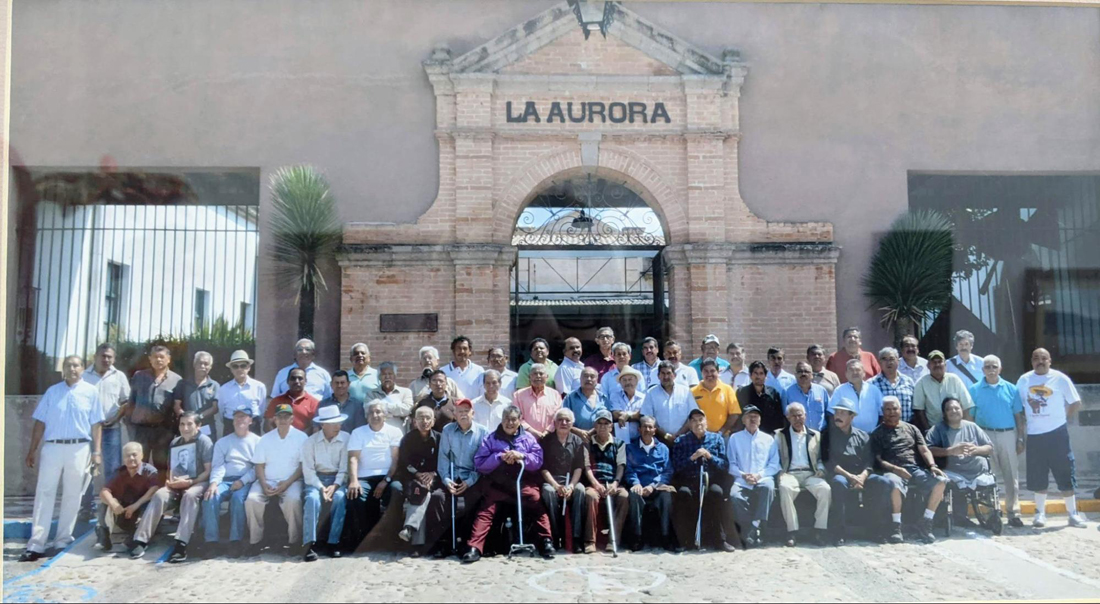
The remaining workers at the closing of the factory in 1991
*
Negociación Fabril de la Aurora ceased its 90 years of operations in 1991, Antonio's 37th year of employment. Antonio expressed his dismay at how many of the beautiful, still-functioning machines were smashed and broken, discarded and thrown in the dump when the factory closed. When we looked at his photo showing all the workers at the closing of the factory, he said wistfully, "Not many of these people are around anymore."
I asked if he and Damiana enjoyed retirement after that, "No!" he exclaimed, "I had to keep working!" and said he went back into the printing business with one of his relatives for many more years. Damiana passed away in 2001 from an illness. She was only 61.
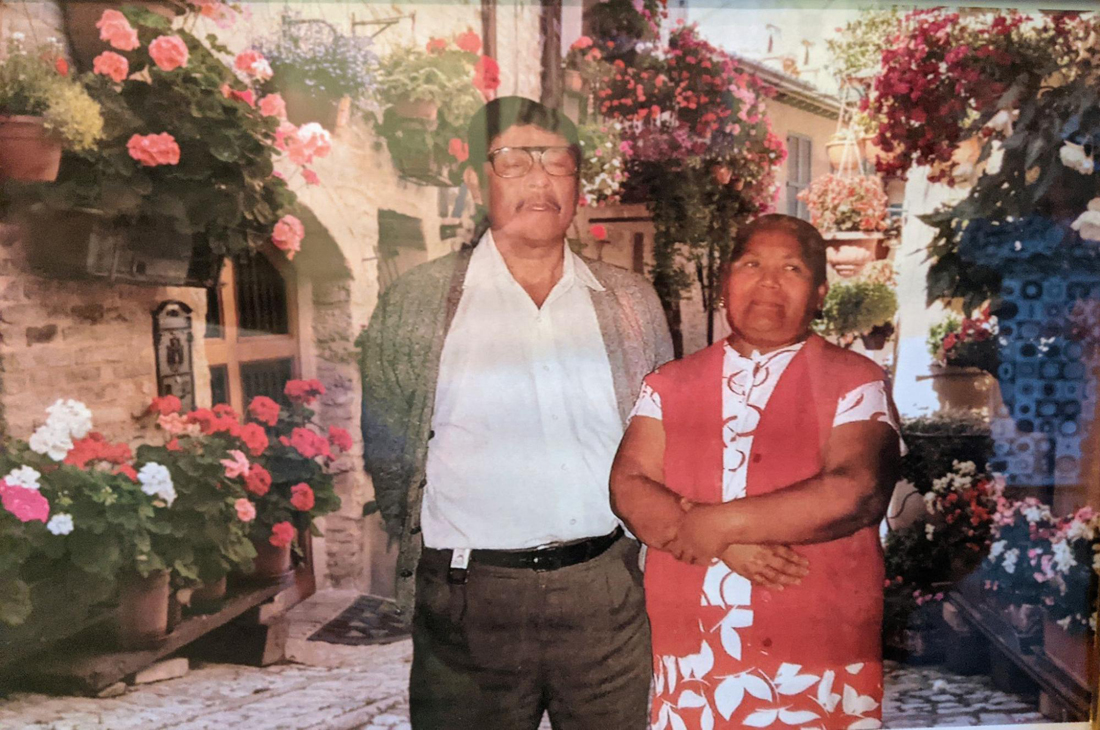
Antonio and Damiana
*
In closing, I asked Antonio, "Do you still enjoy living in San Miguel?" Yes, he answered, "But these days, they don't let me walk outside very much, as I might fall," he said with a grin.
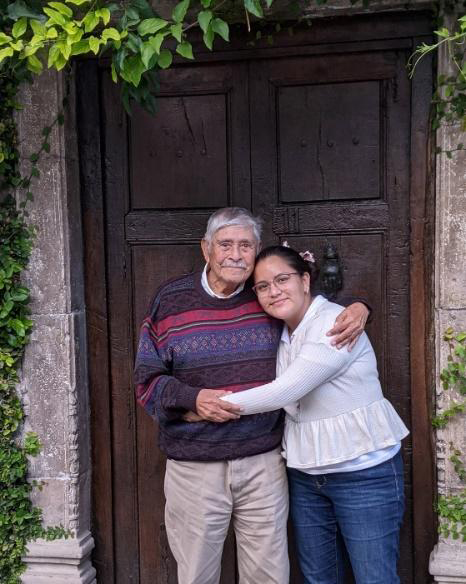
Antonio and granddaughter Alondra, 2021
*
Remnants of the hard work, sweat and toil that went on here are still visible in the rooms and hallways of the popular art and design center that now houses galleries, a framing shop, and several restaurants and cafes. The next time you visit this important place in our community, pause a moment in front of the last of the machinery there and think of all the hard workers like Antonio who played a part in building the foundation of our beautiful San Miguel.
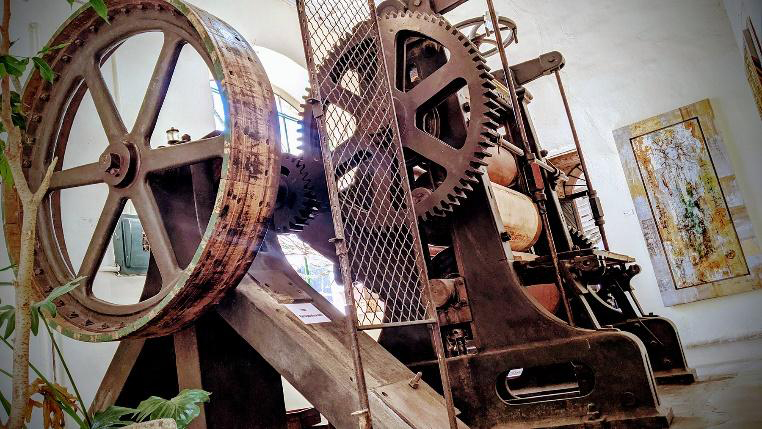
Remnants of the Aurora factory machines inside an art gallery
*
**************

Marni Hills is a well-traveled writer, photographer, and lover of all things weird and unusual. Her obsessions include dogs, animal welfare, travel, fashion, true crime, and mountaineering disasters. She made San Miguel her home in early 2022.
Blog
Instagram
**************
*****
Please contribute to Lokkal,
SMA's non-profit community publication:
 ***
***
Discover Lokkal:
Watch the two-minute video below.
Then, just below that, scroll down SMA's Community Wall.
Mission

Visit SMA's Social Network
